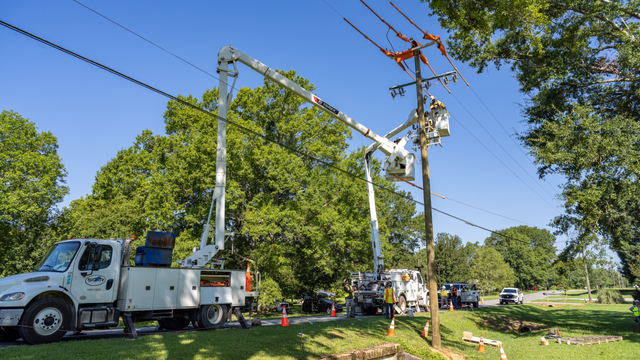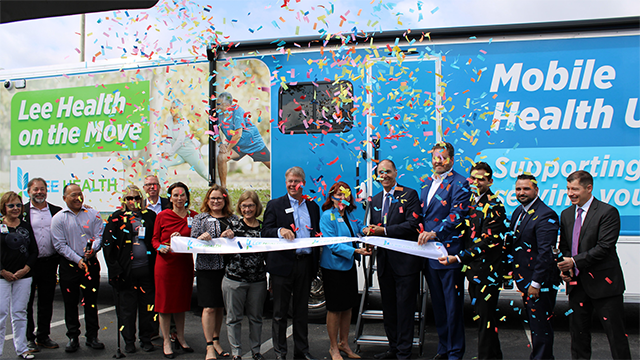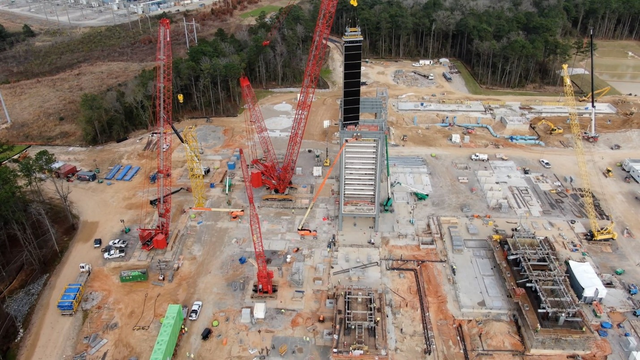There is no denying the rise of distributed energy resources (DER) as policy makers, regulators, environmentalists and the public sector press for decarbonization, resiliency, energy independence and sustainability. As this distributed market grows at an accelerating pace, both behind and in front of the meter, the electric utility industry faces questions around what a distributed grid landscape will look like and the challenges it presents in terms of their role, business model, revenue, margins and asset management as the market develops and matures.
At this point, few will argue against DER playing a significant role in the future generation stack, although the exact mix of technology configurations and the pace of development still are unknown. What we do know is that the roles for solar and batteries will increase, as will the prevalence of more complex intelligent monitoring and control technologies.
What our clients tell us reinforces this perspective according to Black & Veatch’s 2020 Strategic Directions: Electric Report survey, which found that one-third of the electric industry is actively engaged in DER investment and grid modernization. Grid modernization investment trends support the expansion of DER as transmission and distribution loads shift network stress points and capabilities.
The data shows that slightly more than 39 percent of utilities are investing more money in distribution over last year, reflecting a significant step change in their CAPEX planning strategy. Nearly half of respondents (49 percent) said their investment remained the same, suggesting they either are focused on standard distribution upgrades, maintenance and replacements; are taking a “wait and see” approach when it comes to DER; or do not anticipate spending more money than what they were spending in the past, having already ramped up their spending over the previous year. This supports last year’s report, which found that DER spending was less exploratory and more integrated into general rate cases. Only 11 percent of respondents said they are investing less money on distribution than last year.
The data shows one shifting trend in that utilities are increasingly looking to “go local” as they invest in distributed energy and renewables. This “additionality” is driven not just by customer demand for clean energy but the locational (marginal) value of non-wire alternatives (NWAs) to provide grid capacity and stability. With 46 percent investing more money in local renewables over last year, utilities don’t want to just build additional renewable assets somewhere out on the grid; they want these assets to be directly connected to their facilities and service territories, and to see that investment tied into local renewables that will directly impact — and benefit — their customers. A similar trend is playing out in the commercial and industrial (C&I) sector.

Investment in Distributed Energy
When it comes to predicting how investment in new generation capacity will change over the next five years, respondents pointed to land based solar, energy storage and microgrids as the top three categories leading the charge in investment.
Unsurprisingly, the survey points toward a microgrid solution involving integrated solar, storage and controls, shifting the bias to a more comprehensive, intelligent facilities management solution. The actual depth and configurate mix of deployment will vary based on markets, but more importantly on customer buying needs (e.g., reliability, sustainability, decarbonization, cost, etc.) The market is responding with reliability solutions such as Bloom Energy’s solid oxide fuel cells that convert fuel to electricity, without combustion, to deliver reliable, resilient, clean and affordable energy.
Solar continues its meteoric rise, driven by strong regulatory policies, rapidly declining costs and increasing demand. According to the Solar Energy Industries Association (SEIA), solar made up 40 percent of all new electric capacity added last year, and the technology continues to expand rapidly across the U.S., emerging into states such as Florida and Texas, resulting in their largest market share yet. Although subsidies and investment tax credits are heavily driving solar’s ultimate pace of adoption, eventually the market will move to a point where subsidies are not the primary determining factor.
Meanwhile, the energy storage market continues to grow, with ReportLinker forecasting a compound annual growth rate of 24 percent between 2020 and 2025. By ranking energy storage second, battery storage is emerging as a top investment area, demonstrating the industry’s growing comfort with the maturing technology driven by improvement in battery technology and the ability of batteries to manage peaks and flatten the load curve.
But challenges abound, and perceived risk and safety remain top of mind, as few can forget Arizona Public Service’s battery fire in April 2019. There still are issues when it comes to scaling batteries effectively, such as physical space issues and possible shortages and cost shifts in battery input materials such as lithium. Regulatory policy also is a concern — states that have clear regulatory policies in place will have a strong advantage when it comes to attracting investors.
From a practical deployment standpoint, energy storage is not offered as a packaged solution at any scale. As a result, forcing utilities to contract with three or four entities to pull together a solution or do a top-line EPC deal that has five or six sub-providers. This piecemeal approach adds to the complexity when warranties don’t match up, there are no long-term service agreements and nothing is fully integrated. The current level of apprehension can be tied to utilities having to cobble together these solutions, and if something goes wrong, it can delay progress for years.
So what will be the differentiator in the market? Utilities need to make energy storage solutions scalable and safe by pulling together and packaging integrated energy storage solutions that involve a technology integrator, a container, control logic and an EPC. They also need the ability to get recovery from rate base. The market will shift when these fully integrated solutions come to fruition – not just from a technical standpoint but from a support standpoint as well.
The third element, microgrids, reflects the emergence of intelligent systems. We view this digitization in controls as the next phase of the DER shift following the shift in asset mix. Respondents demonstrate a growing awareness that microgrids are not “just” microgrids anymore; they can offer so much more as non-wire alternatives (NWAs) become more packaged and realistic for grid deferment. Additional spend in microgrids suggests one of two things: either the industry lacks comprehensive understanding around the complexity and market readiness of these control systems, or that the software and logic controls are maturing to the point that they will become viable to roll out at scale. That said, the maturity level and speed at which the coordination and harmonization software and telecom components can keep up with the spend will be an important driver in the next five to 10 years or, more likely, 15 years.
Diving deeper into the rankings, the increased spending on wind — both on land and offshore — reflects the technology’s role as a standard asset in the generation portfolio. But that said, wind has a natural ceiling compared to some of the alternative solutions – due to land use and reliability, among other reasons. Gas-fired/LNG-to-power continues to hold steady in the middle, reflecting its role as a base component across fleets and its ability to improve emissions significantly while scaling down size. NWAs still must balance the premium paid for resiliency and the cost deferral of standard grid upgrades against more traditional grid centralized investments.
Perhaps more interesting is what comes next — the appearance of waste-to-energy, hydrogen, hydropower and geothermal. Three years ago, this would not have been unheard of, but these proven technologies slowly are becoming more cost-effective, driving investment.
The main takeaway? Over the past few years, utilities increasingly have recognized the role DER will play and are actively shifting their asset management and investment strategies to guide this transition, particularly in areas with favorable regulatory policy (e.g., California and New York). By delivering improved reliability, this new investment strategy also may reap OPEX benefits in the future, plus it could generate new earning paths centered around offering solutions to commercial and industrial (C&I) customers who otherwise may seek out their own off-grid solutions.
Pushing Out the Timeline
The past few years have been focused on determining the horizon for when DER will comprise the bulk of the resource stack. Due to a welter of issues — a recognition that this is a long journey, paired with complicated technology, policy and regulatory considerations — that timeline has stretched, and now the industry is looking past the 10-year mark to deliver DER at scale across the utility footprint.
Survey data shows that utilities are changing their perceptions. When polled on the integration of DER year-over-year, we see that support for the five-year timeline has slipped and respondents are taking a more realistic view, looking 10 to 15 years ahead to between 2030 and 2050. At some point, DER will dominate the resource stack and utilities will still be able to monetize and commercialize it, but the process will take longer than originally expected, with the largest shift coming at the 10-year mark and perhaps even stretching out to 25 years.
DER remains an increasing reality. Utilities are acknowledging that there are issues from a policy perspective, but they are on a change curve. At this moment, we are witnessing the progression, though it may be methodical from an investment and resources standpoint.

The Future is Unknown
Utilities continue to deal with the complexities of investing in DER and grid modernization. DER solutions increasingly are becoming sophisticated through the advent of complex intelligent monitoring and control technologies, driving increased expansion both behind and in front of the meter.
One thing is for certain — the future is unknown. The exact blend of technologies and pace of development remain unclear, though survey data shows a shifting blend of optimism and realism as timelines push back beyond the 10-year mark, reflecting a growing awareness around the complexities of distributed energy.
DER will continue to play a significant role in the current generation stack, particularly as the market moves towards more turnkey configurable solutions. Many areas of the country will start reaching the tipping point on how they manage the distribution grid due to higher penetrations of DER. This is where the rubber will meet the road when it comes to grid edge decision-making and how quickly it can roll out to support a truly distributed grid.
About the Authors
Kevin Prince leads Black & Veatch’s global distributed generation business overseeing the strategic direction, growth and execution of the company’s DER offerings serving both commercial and industrial customers as well as utilities. Solutions include onsite solar, energy storage, electric vehicle infrastructure, fleet electrification and CHP. He has more than 18 years of experience in the energy industry and has developed and closed more than $1 billion in projects for Fortune 500 companies and public and governmental entities.
Leslie Ponder is the technology portfolio director for global distributed energy at Black & Veatch, where she is responsible for evaluating and delivering technology solutions within distribution, asset management, and distributed generation. Ponder has more than 30 years of experience, and has led systems strategy and planning for communications, grid analytics and grid control and security systems.
Kevin Cornish is a senior managing director of the growth and performance practice with Black & Veatch Management Consulting. Cornish focuses on providing support to utilities as they perform strategic business assessments, implement enabling technologies, and revamp engineering and business processes to improve their competitiveness and evolve with the changing grid.
James Hendrickson is a senior managing director in Black & Veatch Management Consulting. With more than 30 years of experience in power and gas consulting, Hendrickson is considered a driving force in the industry a driving for in the industry, assisting clients in assessing strategy, develop next generation business and capability models and deploy new technologies ranging from DERs to digitalization and analytics across competitive and regulated markets.





